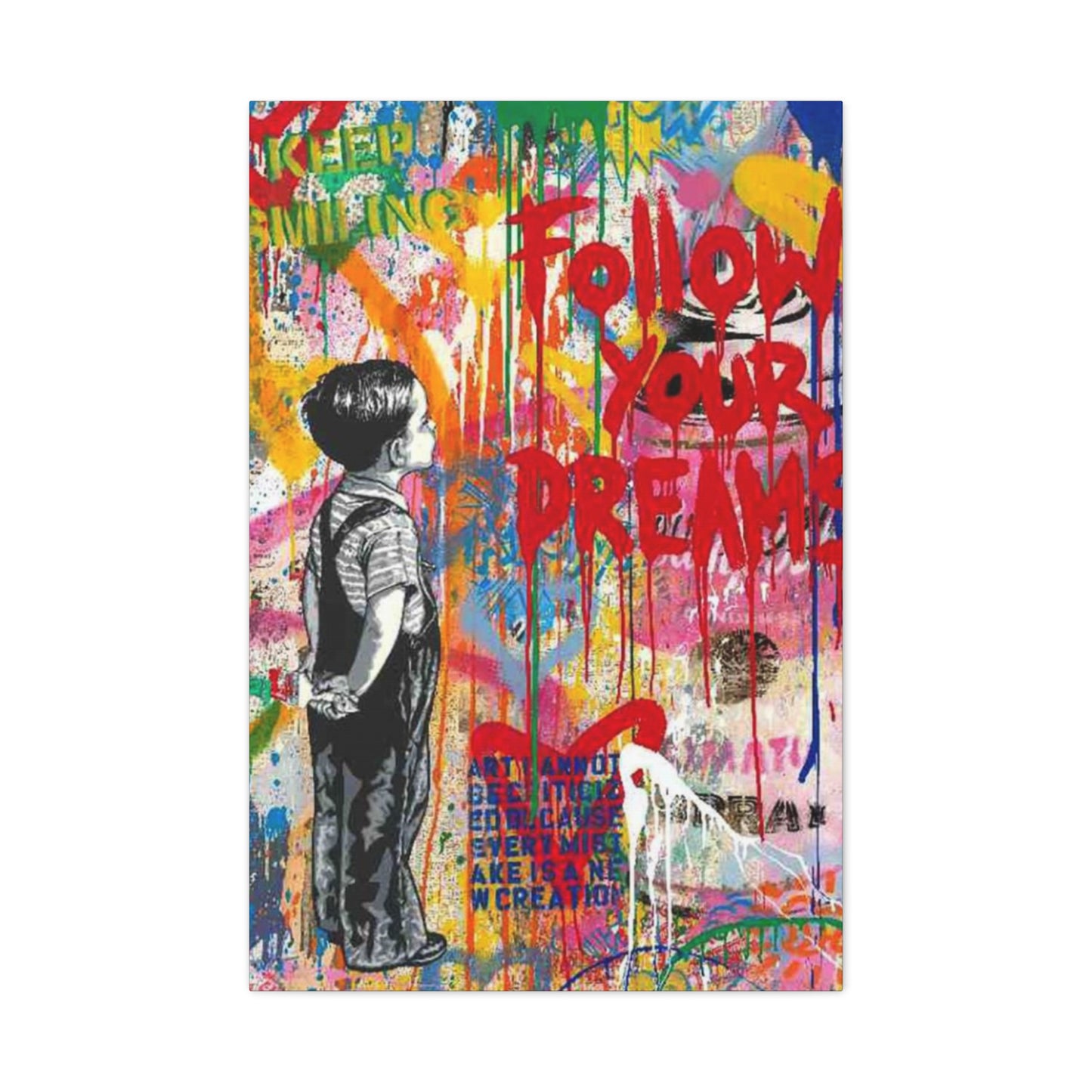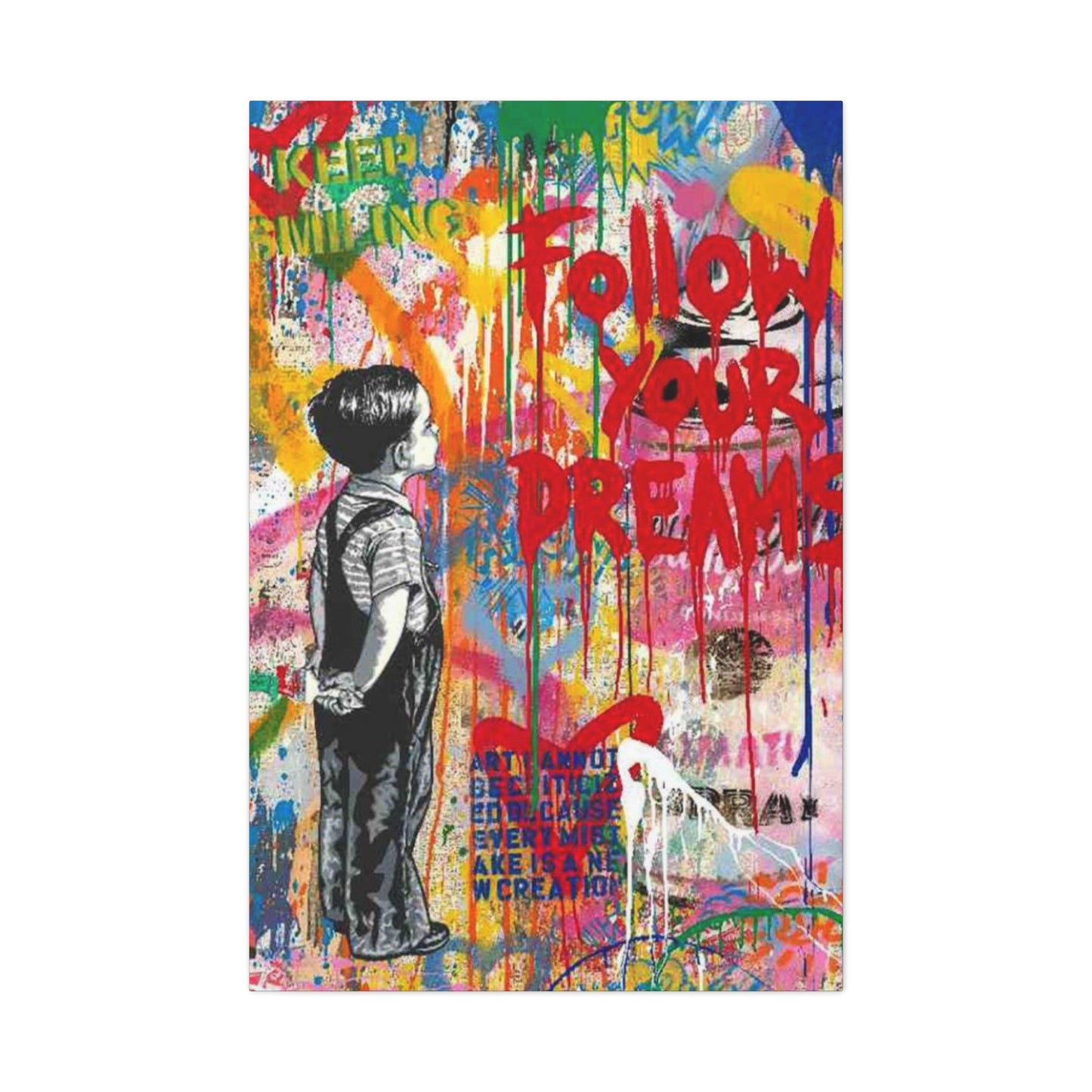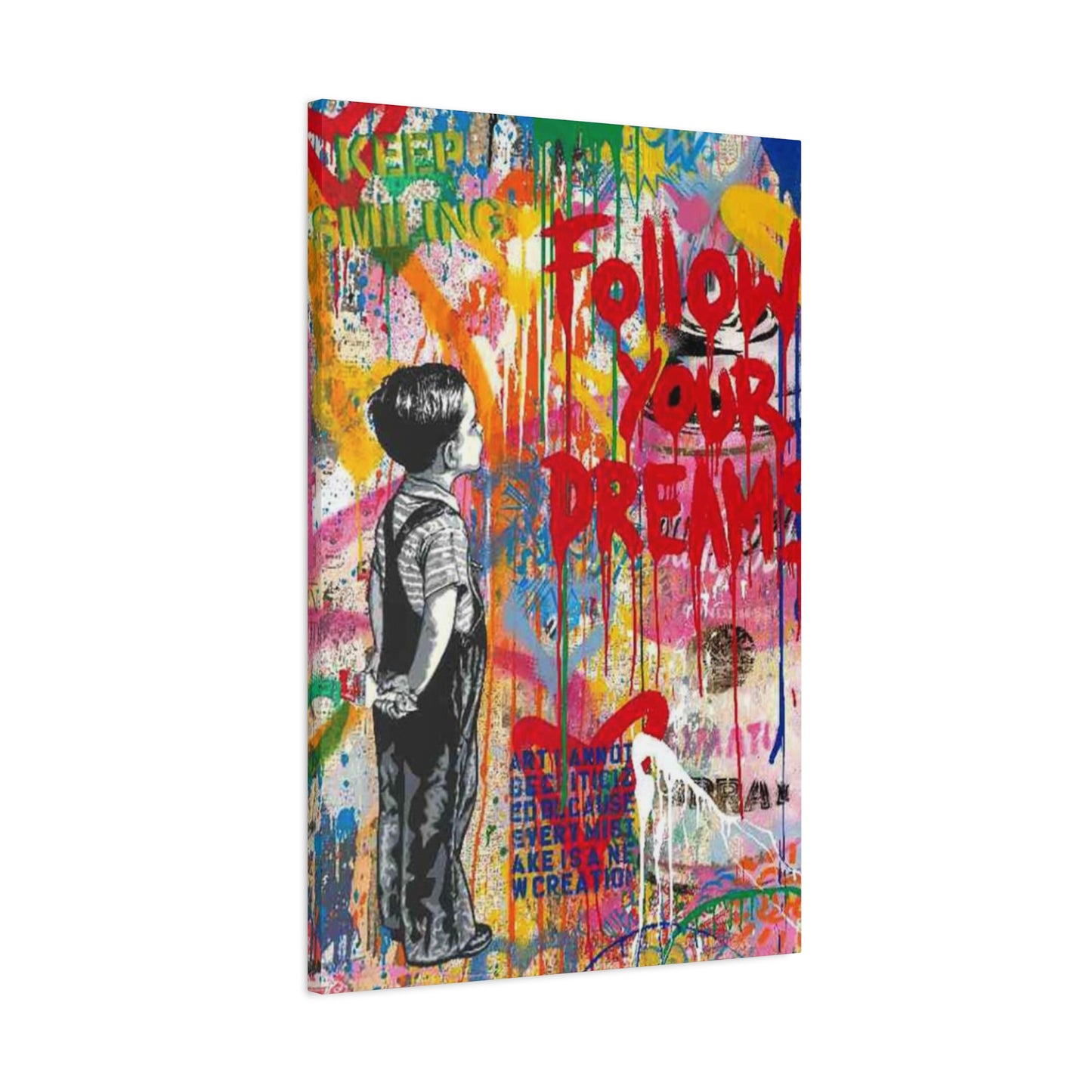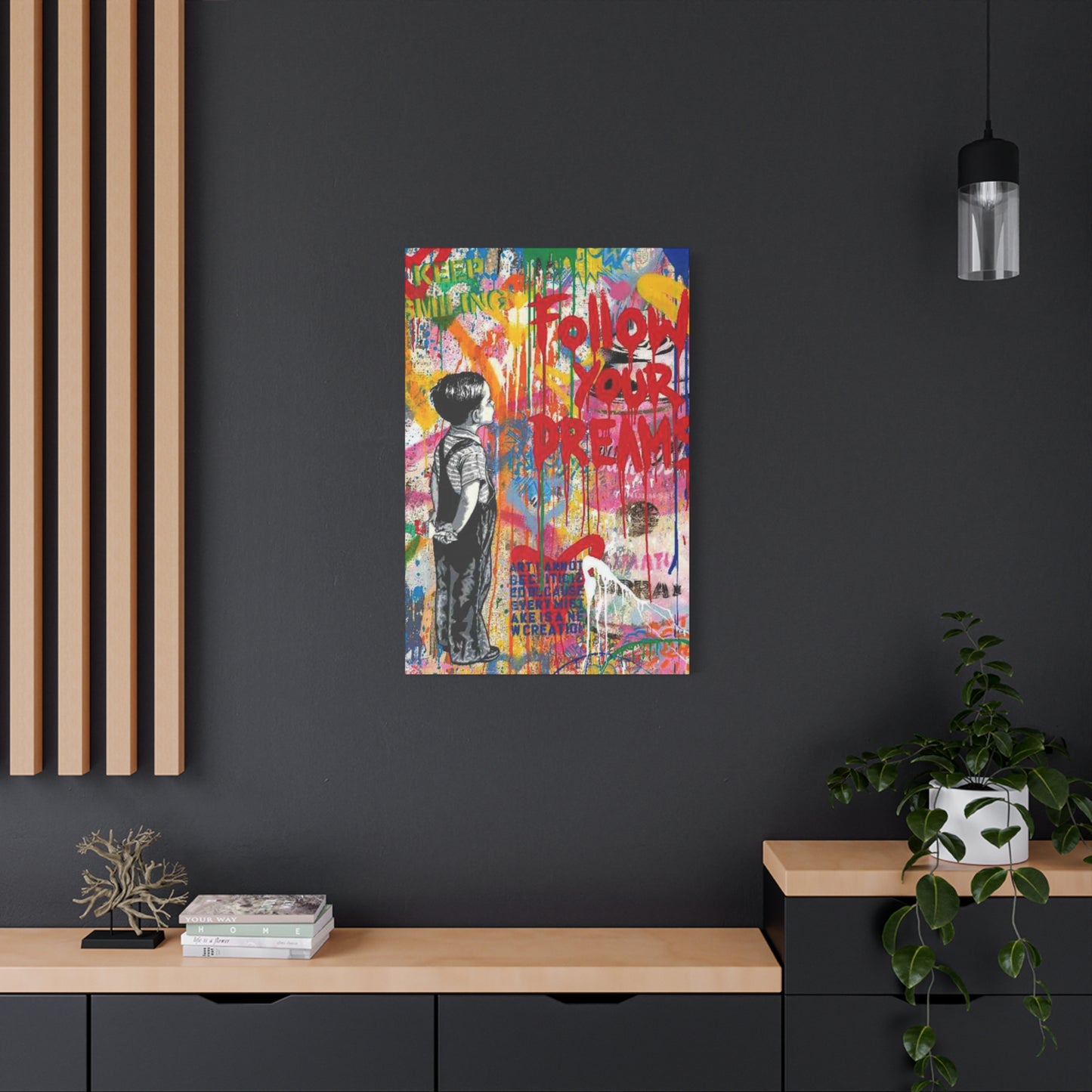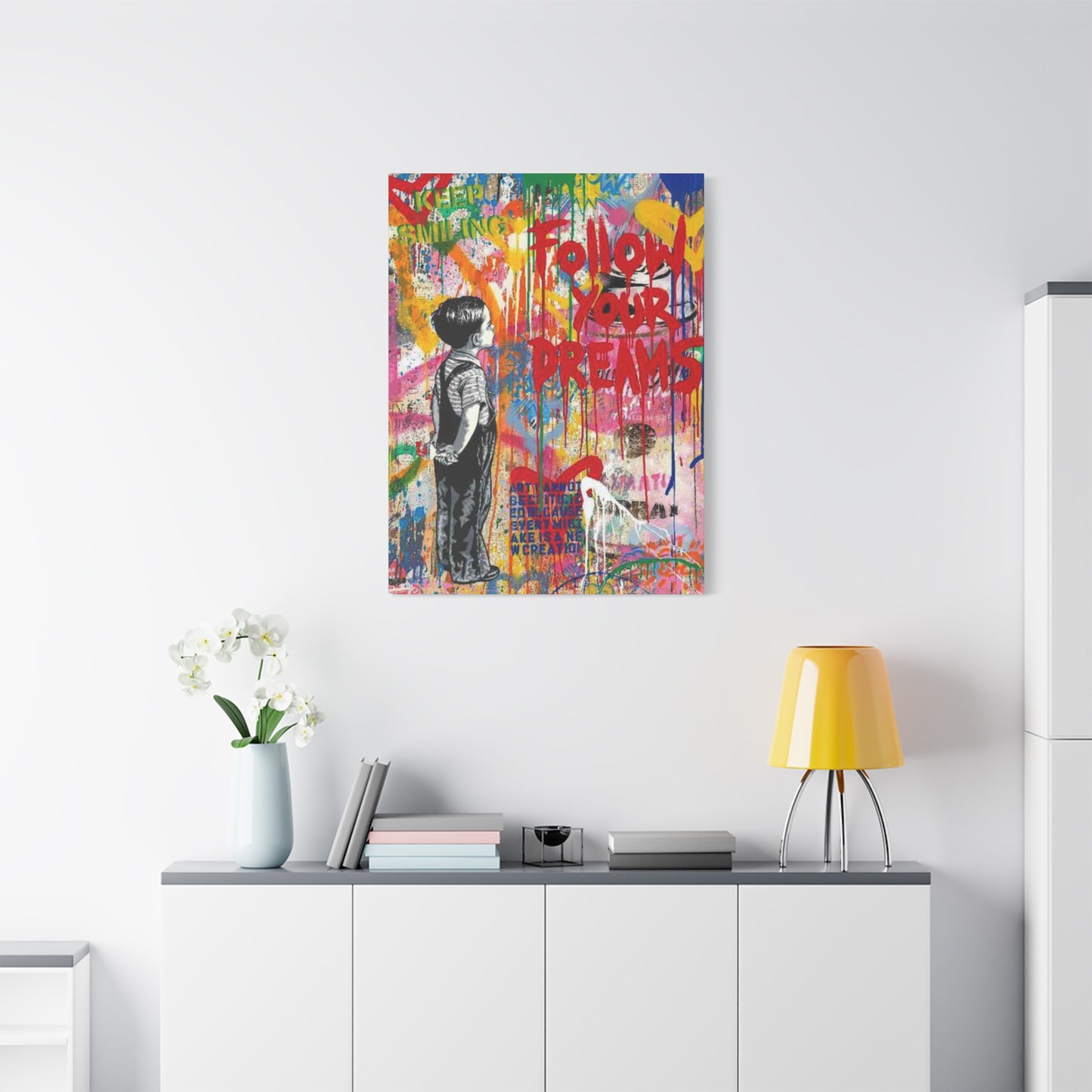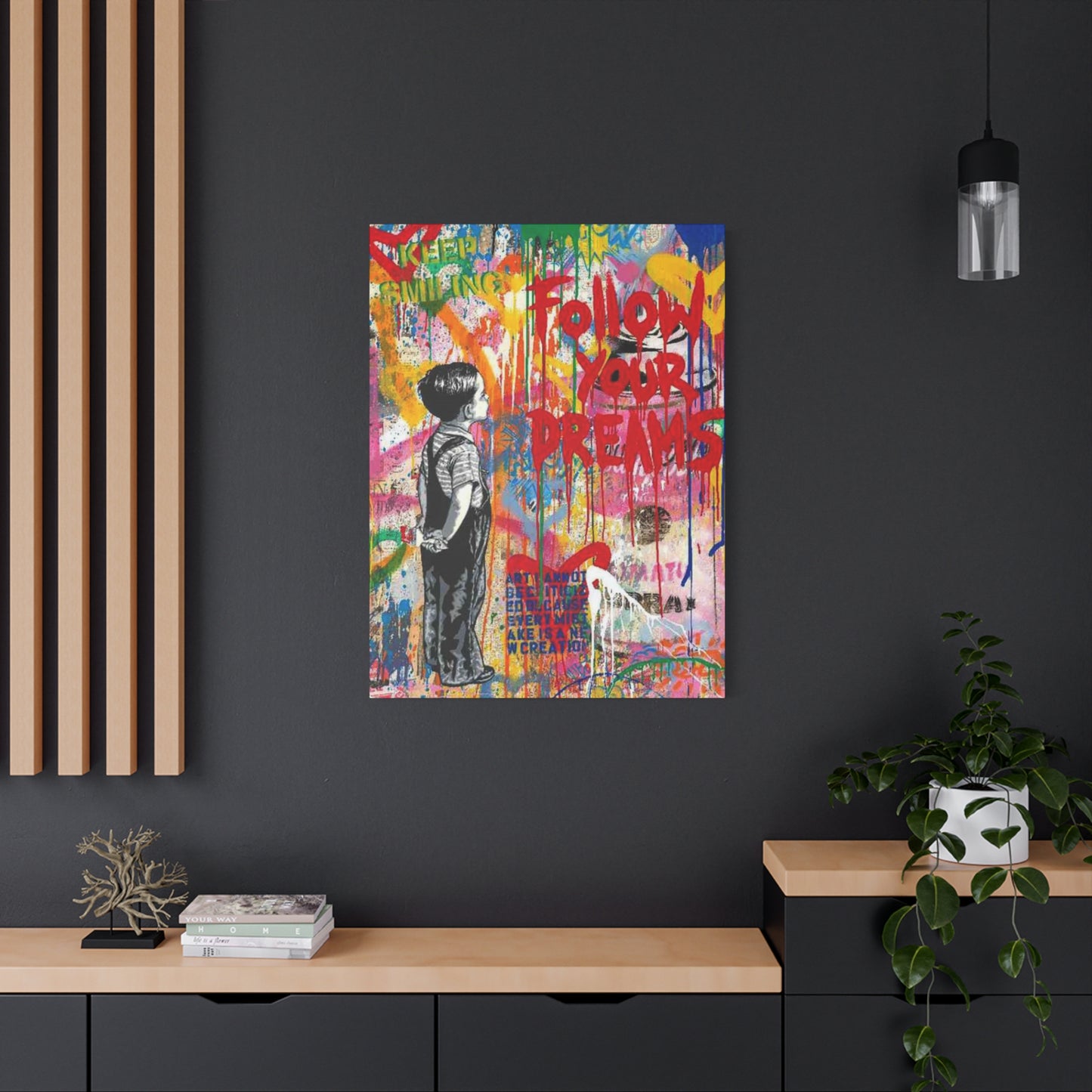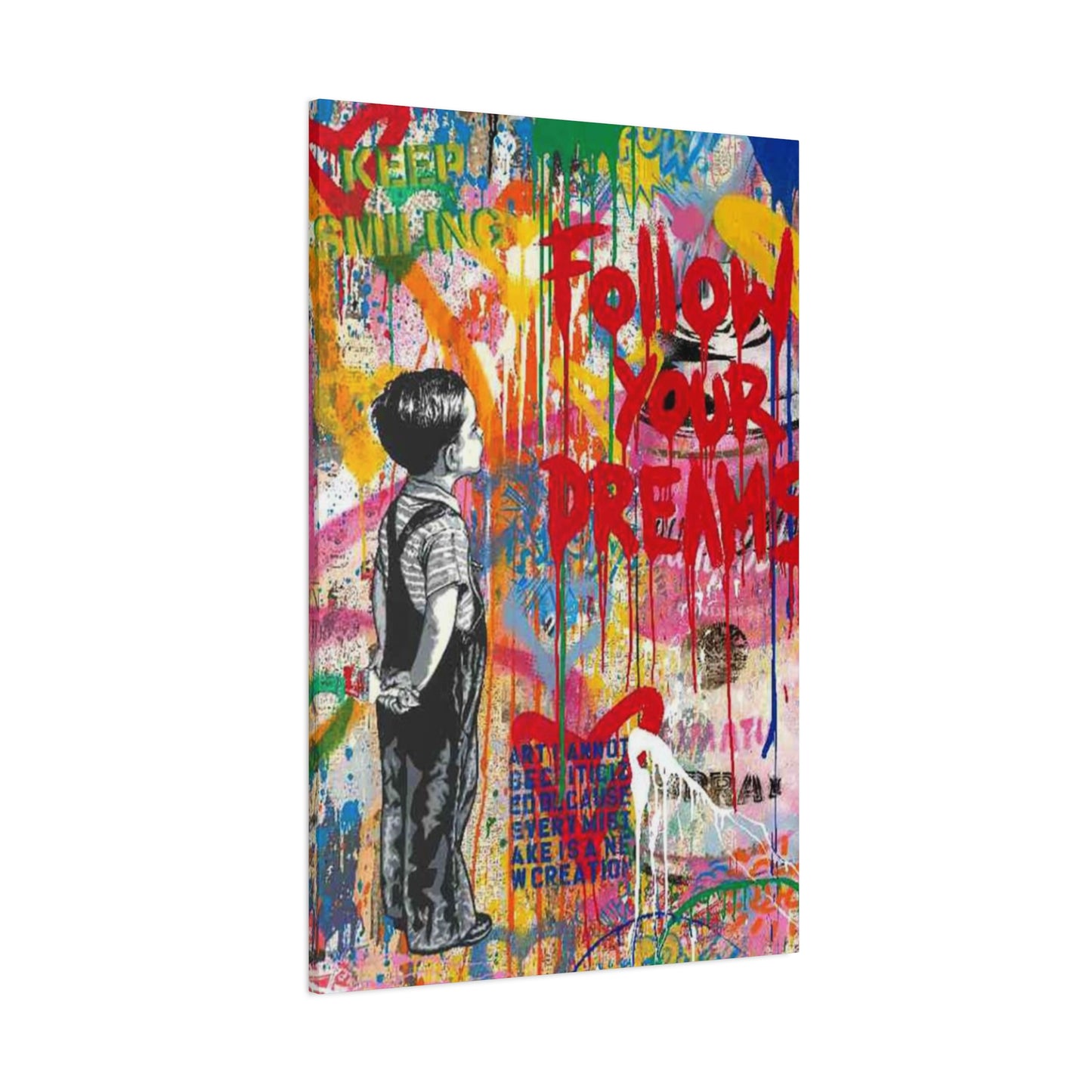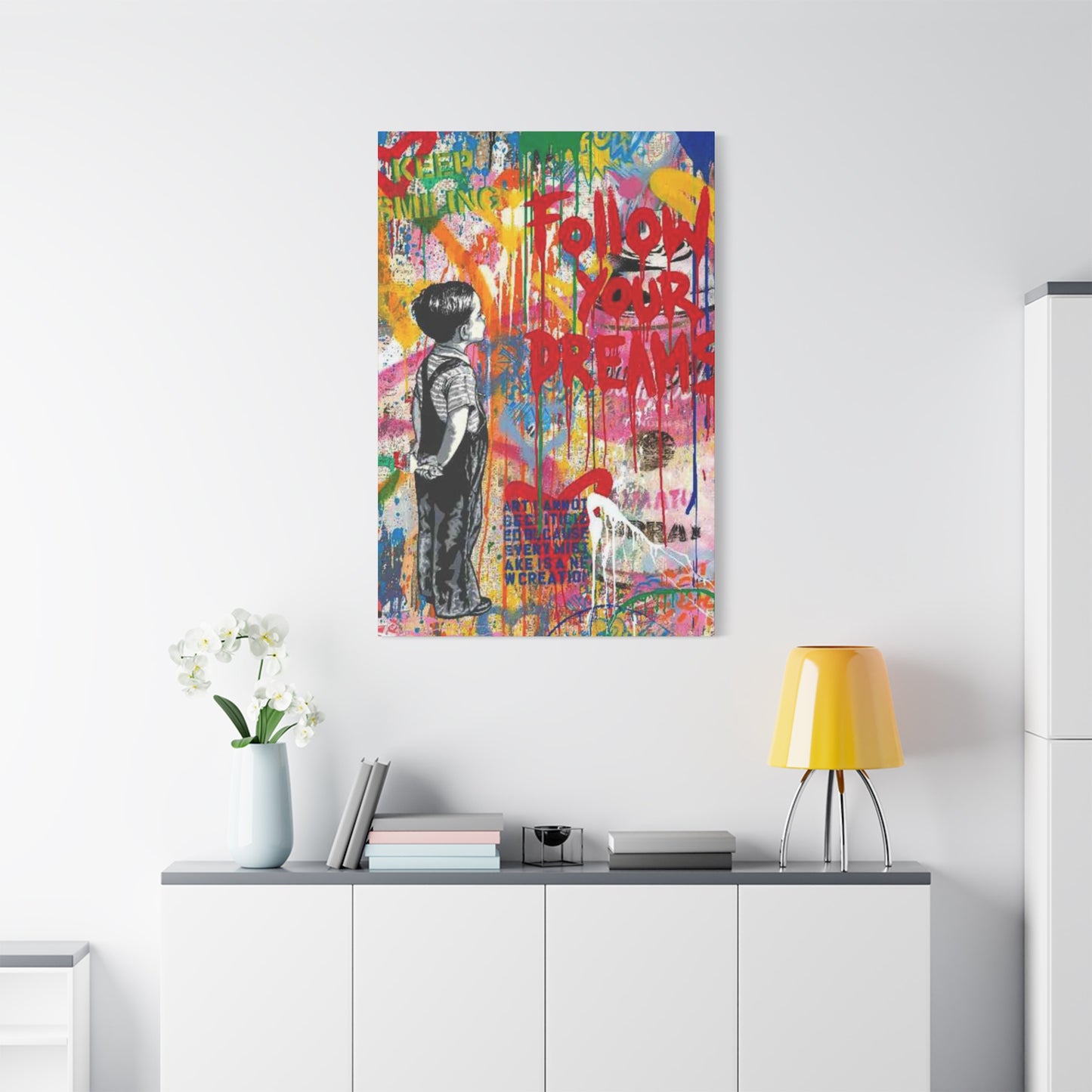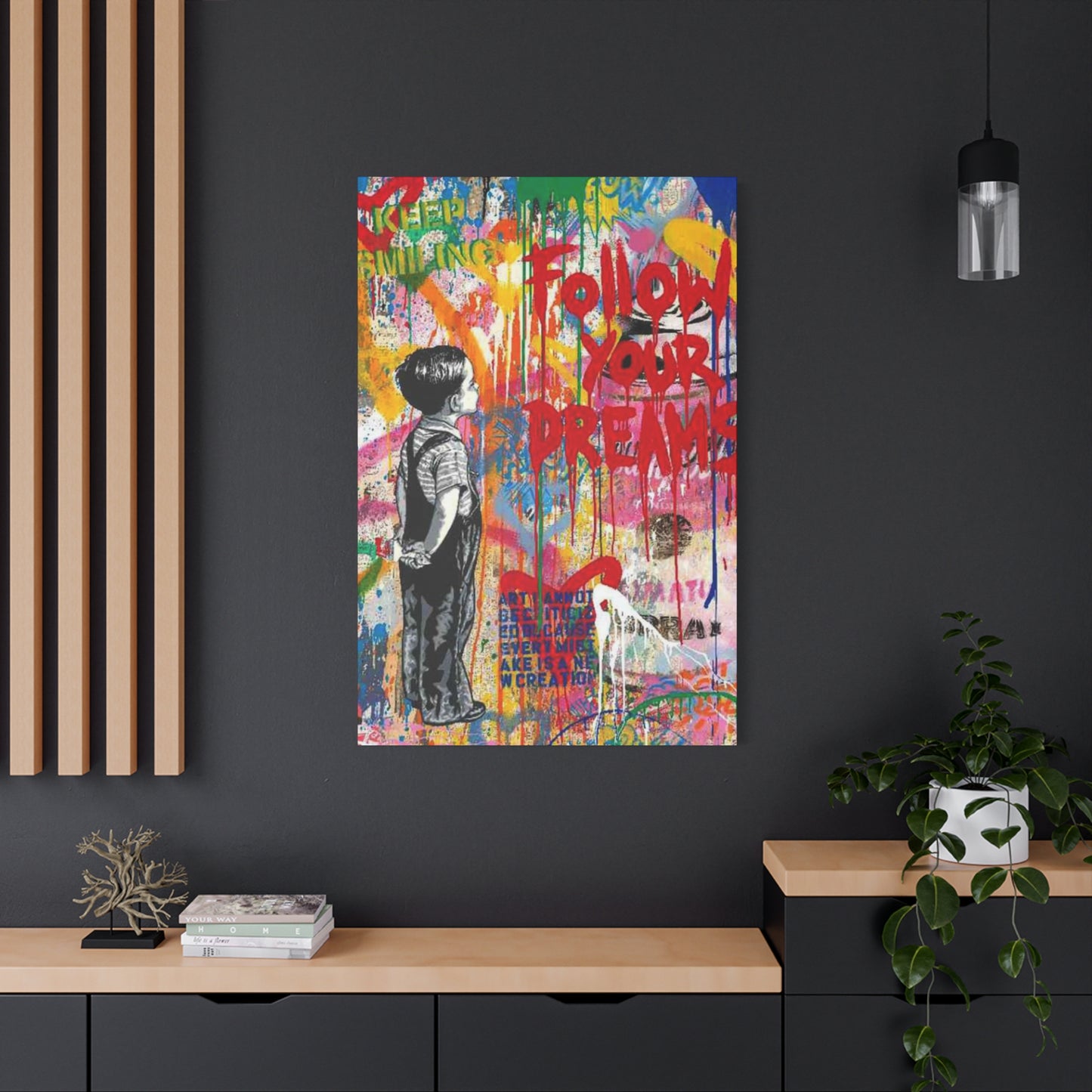Creative Painting Activities for Kids Inspired by Contemporary Child Portrait Wall Art
Artistic expression forms a cornerstone of childhood development, offering young minds countless opportunities to explore creativity, develop fine motor skills, and express emotions in meaningful ways. When children engage with painting activities, they embark on journeys of discovery that extend far beyond simple color application on paper. These creative endeavors foster cognitive development, enhance problem-solving abilities, and provide essential outlets for self-expression that contribute significantly to overall personal growth.
The world of children's painting encompasses an enormous range of techniques, materials, and approaches that can captivate young artists from toddlerhood through adolescence. Each brushstroke represents a moment of decision-making, while every color choice reflects personal preference and developing aesthetic sensibility. Through painting activities, children learn to observe their environment more carefully, experiment with cause and effect relationships, and develop patience and concentration skills that benefit them throughout their educational journey.
Modern research consistently demonstrates the profound impact that artistic activities have on brain development during crucial formative years. Neural pathways strengthen through creative expression, supporting improved academic performance, enhanced emotional regulation, and increased self-confidence. Children who regularly engage in painting activities often display superior communication skills, greater empathy, and more sophisticated problem-solving approaches compared to peers with limited artistic exposure.
The accessibility of painting as an artistic medium makes it particularly valuable for childhood development programs. Unlike many other creative pursuits that require expensive equipment or specialized facilities, painting can be accomplished with basic materials in virtually any environment. This versatility ensures that children from diverse socioeconomic backgrounds can experience the joy and benefits of artistic creation, promoting equity in creative education opportunities.
Furthermore, painting activities naturally accommodate different learning styles and developmental stages. Visual learners thrive when exploring color relationships and composition principles, while kinesthetic learners benefit from the physical aspects of brush handling and paint manipulation. Children who struggle with traditional academic subjects often discover confidence and success through artistic expression, creating positive associations with learning that can transform their overall educational experience.
Benefits of Painting Activities for Child Development
Engaging children in regular painting activities produces measurable improvements across multiple developmental domains. Fine motor skill development occurs naturally as young artists learn to control brushes, squeeze paint tubes, and manipulate various artistic tools. These enhanced motor abilities translate directly to improved handwriting, better coordination in sports activities, and increased dexterity in daily tasks requiring precision and control.
Cognitive benefits extend throughout intellectual development as children learn to plan compositions, make sequential decisions, and evaluate their artistic choices. The process of mixing colors teaches basic scientific principles while encouraging experimentation and hypothesis testing. Children discover that combining blue and yellow creates green, that adding white lightens colors, and that darker shades emerge when black is introduced. These discoveries lay groundwork for understanding more complex scientific concepts in later academic years.
Emotional development receives tremendous support through painting activities as children learn to express feelings that may be difficult to verbalize. Young artists can communicate joy through bright, energetic brushstrokes or process sadness through darker, more contemplative compositions. This emotional outlet proves particularly valuable for children experiencing significant life changes, family transitions, or other stressful circumstances that may overwhelm their developing coping mechanisms.
Social skills flourish when painting becomes a collaborative activity shared with peers, siblings, or adult mentors. Children learn to share materials, respect others' creative choices, and offer constructive feedback about artistic works. Group painting projects teach negotiation skills, compromise strategies, and the value of different perspectives in creating successful collaborative outcomes.
Language development receives unexpected benefits as children describe their artistic processes, explain color choices, and narrate the stories behind their creations. Vocabulary expands to include color names, artistic terms, and descriptive adjectives that enhance overall communication abilities. These linguistic improvements often transfer to other academic areas, supporting reading comprehension and writing skills development.
Self-esteem grows naturally through painting activities as children experience the satisfaction of creating something uniquely their own. Unlike academic subjects with predetermined correct answers, artistic expression celebrates individual interpretation and personal style. This acceptance of diverse approaches helps children develop confidence in their abilities and willingness to take creative risks in other areas of their lives.
Essential Materials and Setup Requirements
Creating an effective painting environment for children requires careful consideration of materials, workspace organization, and safety protocols. Basic supplies should include washable tempera paints in primary colors plus black and white, allowing for extensive color mixing opportunities. Quality brushes in various sizes enable different techniques, from detailed work requiring fine brushes to broad strokes needing larger tools. Synthetic brushes often work best for young artists as they maintain their shape well and clean easily.
Paper selection significantly impacts the painting experience, with heavier paper weights preventing frustrating tears and bleeds that can discourage young artists. Watercolor paper provides excellent results for most children's painting activities, while finger painting paper offers smooth surfaces ideal for hand-based techniques. Large paper sizes encourage bold, confident strokes and prevent the cramped, tentative marks that often result from inadequate canvas sizes.
Workspace preparation involves protecting surfaces with plastic tablecloths, newspapers, or dedicated art mats. Adequate lighting ensures accurate color perception and reduces eye strain during extended creative sessions. Easy access to water containers for brush cleaning and paper towels for quick cleanups maintains momentum in artistic activities while teaching responsible studio practices.
Safety considerations include selecting non-toxic, washable paints specifically formulated for children's use. Proper ventilation becomes important when using any art materials, even those designed for young artists. Age-appropriate tools prevent frustration and potential injuries, with larger brushes and painting implements working best for very young children who are still developing fine motor control.
Storage solutions should accommodate both wet and dry artwork while keeping supplies organized and accessible. Drying racks prevent smudging of wet paintings while dedicated supply containers make cleanup efficient and maintain material quality. Clear labeling helps children learn organizational skills while enabling independent setup and cleanup routines.
Additional helpful materials include smocks or old clothes to protect garments, spray bottles for keeping paints moist, and palette knives for color mixing. Sponges offer alternative painting tools and aid in cleanup, while cotton swabs provide precision for detailed work or corrections. Having backup supplies prevents creative sessions from ending prematurely due to material shortages.
Age-Appropriate Techniques and Methods
Tailoring painting activities to specific age groups ensures optimal engagement and developmental benefits while preventing frustration that can diminish enthusiasm for artistic pursuits. Very young children, typically ages two to four, benefit most from large-scale movements using chunky brushes, foam brushes, or finger painting techniques that accommodate their still-developing fine motor skills and shorter attention spans.
Finger painting represents an ideal starting point for the youngest artists, allowing direct tactile engagement with paint while eliminating concerns about brush control. This technique encourages sensory exploration as children discover how paint feels between their fingers and how different pressures create varying marks. The immediate feedback and complete creative control help build confidence and positive associations with artistic activities.
Preschool children, ages four to six, can begin incorporating basic brush techniques while still enjoying the freedom of more experimental approaches. Simple stamping activities using household items like sponges, cork stoppers, or vegetable pieces introduce pattern-making concepts while maintaining the playful nature that sustains young interest. These activities bridge the gap between purely sensory exploration and more structured artistic techniques.
Early elementary students, typically ages six to eight, can handle more complex projects involving planned compositions, color mixing exercises, and basic brush stroke techniques. Wet-on-wet watercolor methods produce magical effects that captivate this age group while teaching fundamental watercolor principles. Simple landscape projects or abstract color explorations build technical skills while maintaining creative freedom.
Older elementary children, ages eight to twelve, can engage with more sophisticated techniques including dry brush methods, layering approaches, and planned compositional elements. Still life paintings from simple objects help develop observational skills while portrait projects encourage careful attention to facial features and proportions. These students can also begin learning about famous artists and attempting to recreate simplified versions of master paintings.
Middle school students require challenges that respect their developing critical thinking abilities while acknowledging their increased self-consciousness about artistic abilities. More complex color theory lessons, advanced brush techniques, and expressive painting projects that connect to personal interests help maintain engagement during this crucial developmental period when many children abandon artistic pursuits.
Throughout all age groups, maintaining emphasis on process over product ensures continued enjoyment and learning. Celebrating effort, creativity, and personal expression rather than technical perfection encourages continued participation and prevents the discouragement that often accompanies unrealistic expectations about artistic outcomes.
Finger Painting Adventures
Finger painting offers unparalleled opportunities for young children to explore color, texture, and mark-making through direct physical engagement with artistic materials. This fundamental technique requires minimal setup while providing maximum creative freedom, making it an ideal entry point for introducing very young children to artistic expression. The sensory nature of finger painting supports multiple developmental goals while creating joyful experiences that establish positive associations with creative activities.
The tactile experience of finger painting provides essential sensory input that supports brain development and integration. Young children learn about texture, temperature, and consistency while developing hand-eye coordination through direct manipulation of paint. The immediate feedback between hand movements and resulting marks helps establish cause-and-effect understanding while building confidence in personal creative abilities.
Color exploration becomes intuitive through finger painting as children discover mixing principles through direct experimentation. Watching blue and yellow blend to create green between their fingers provides visceral understanding of color relationships that purely visual demonstrations cannot match. These hands-on discoveries form lasting memories that support future learning about color theory and scientific principles.
Emotional expression finds natural outlet through finger painting as children can apply paint with varying pressure, speed, and intensity to communicate feelings. Gentle, flowing movements might express calm or contentment while vigorous, energetic marks could represent excitement or frustration. This direct connection between emotional state and artistic mark-making helps children develop emotional awareness and regulation skills.
Safety considerations for finger painting include selecting appropriate non-toxic, washable paints and ensuring adequate workspace protection. Washable tempera paints work excellently for most finger painting activities, while specialized finger paints offer enhanced texture and easier cleanup. Paper should be large enough to accommodate full arm movements, with 18x24 inch sheets providing adequate workspace for most young artists.
Setup procedures should prioritize easy cleanup and child independence. Protecting clothing with smocks or old garments prevents staining concerns that might inhibit creative expression. Having damp cloths readily available enables quick hand cleaning between color changes while maintaining creative momentum. Designated areas for wet artwork prevent smudging and allow proper drying.
Advanced finger painting techniques can challenge older children while maintaining the fundamental appeal of direct tactile engagement. Creating textured effects by varying finger pressure, using fingernails to create linear elements, or combining finger painting with other materials expands creative possibilities. Palm prints, fist stamps, and full-hand impressions add variety to mark-making vocabulary.
Collaborative finger painting projects build social skills while creating larger artistic works. Multiple children working on single large papers learn cooperation, sharing, and creative negotiation. These group activities often result in spontaneous storytelling as children explain their contributions and build upon others' creative ideas.
Brush Techniques for Young Artists
Introducing proper brush techniques to young artists requires balancing skill development with creative freedom to maintain enthusiasm while building fundamental abilities. Young children naturally want to explore brushes as tools for mark-making, and channeling this curiosity into productive learning experiences sets the foundation for lifelong artistic enjoyment. Starting with basic brush handling and gradually introducing more complex techniques ensures steady progress without overwhelming developing fine motor skills.
Proper brush grip represents the foundation of all future brush techniques, with children learning to hold brushes near the ferrule (metal band) for maximum control. Young artists often initially grip brushes like pencils, but gentle guidance toward a more relaxed hold enables better paint flow and reduces hand fatigue. Demonstrating how different grip positions affect brush control helps children discover optimal handling techniques through experimentation.
Basic brush strokes form the vocabulary of painting techniques, beginning with simple horizontal and vertical lines that teach brush control and paint application principles. Curved strokes, dots, and circular motions expand this vocabulary while supporting the development of hand coordination necessary for writing skills. Practicing these fundamental strokes as warm-up activities before main painting projects builds muscle memory and confidence.
Brush loading techniques teach children how much paint to collect on brushes for different effects. Light loading creates transparent washes and subtle color applications, while heavy loading produces bold, opaque strokes. Learning to remove excess paint by gently touching brush tips to paper towels prevents drips and enables more controlled mark-making. These technical skills support artistic expression while reducing frustration from unintended paint effects.
Paint mixing on palettes introduces color theory concepts while developing brush manipulation skills. Children learn to clean brushes between colors to prevent muddy mixes, and they discover how different amounts of paint create varying color intensities. Starting with two-color mixes and gradually introducing three or more colors builds complexity at manageable rates.
Different brush sizes serve different purposes, with large brushes ideal for covering broad areas and creating bold statements while small brushes enable detailed work and precise mark-making. Teaching children to select appropriate brush sizes for different project phases helps them work more efficiently while achieving desired artistic effects. This decision-making process supports problem-solving skill development.
Texture creation through varied brush techniques adds interest to paintings while teaching cause-and-effect relationships. Dry brush techniques create scratchy, textured marks while wet brush applications produce smooth, flowing strokes. Stippling with brush tips creates spotted textures, and dragging partially loaded brushes creates streaked effects. These technique variations expand creative possibilities while building technical skills.
Brush care and maintenance teach responsibility while protecting valuable art supplies. Children learn to clean brushes thoroughly between colors and at session end, to reshape brush tips while wet, and to store brushes properly to maintain their effectiveness. These care routines instill respect for art materials while supporting independent setup and cleanup abilities.
Watercolor Exploration Methods
Watercolor painting offers unique opportunities for children to explore transparency, color flow, and unpredictable artistic effects that can captivate young imaginations while teaching fundamental artistic principles. The fluid nature of watercolors creates magical transformations as colors blend and flow in ways that cannot be precisely controlled, helping children develop comfort with artistic uncertainty and spontaneous creative discoveries.
Wet-on-wet techniques produce spectacular results that amaze young artists while teaching them about paint behavior and water management. When wet paint meets wet paper or other wet paint, colors blend naturally to create soft, organic effects that suggest clouds, flowers, or abstract emotional expressions. These unpredictable outcomes help children develop flexibility and appreciation for happy accidents in artistic processes.
Color bleeding and blending demonstrate scientific principles about liquid behavior while creating beautiful artistic effects. Children observe how different colors interact when they meet on wet surfaces, learning that some combinations create muddy results while others produce vibrant new hues. These discoveries support both artistic and scientific understanding through hands-on experimentation.
Paper preparation significantly affects watercolor outcomes, with children learning how paper dampness influences paint behavior. Completely wet paper creates maximum color flow and blending, while damp paper provides more control over paint movement. Dry paper produces the most predictable results but limits the magical blending effects that make watercolors particularly appealing to young artists.
Salt techniques create fascinating texture effects when sprinkled on wet watercolor paintings. As salt crystals absorb moisture from paint, they create star-like patterns and unique textures that suggest snow, fireworks, or magical sparkles. This simple technique demonstrates scientific principles about absorption while producing delightful visual results that encourage continued experimentation.
Masking techniques using tape, contact paper, or masking fluid help children create clean edges and reserved white areas in their paintings. These methods teach planning skills as children must decide which areas to protect before beginning paint application. Removing masking materials reveals sharp contrasts that often surprise and delight young artists.
Watercolor resist techniques using crayons, oil pastels, or candles create dramatic effects as oil-based materials repel water-based paints. Children can draw secret pictures with white crayons that magically appear when painted over with watercolors. These resist techniques combine multiple media while teaching about material compatibility and chemical interactions.
Graduated washes teach color value concepts as children learn to create smooth transitions from dark to light tones. Starting with concentrated color and gradually adding water creates beautiful gradations that suggest skies, water surfaces, or dimensional form. These technical exercises build skills while producing aesthetically pleasing results.
Watercolor pencils bridge drawing and painting activities, allowing children to create precise marks that transform into painterly effects when water is applied. This hybrid medium offers additional control compared to liquid watercolors while still providing the transparency and blending characteristics that make watercolors appealing to young artists.
Creative Color Mixing Adventures
Color mixing represents one of the most engaging aspects of painting for children, combining scientific discovery with artistic expression in ways that captivate young minds while building essential knowledge about color relationships. Through hands-on experimentation, children discover the magic of primary color combinations while developing understanding of warm and cool color families, complementary relationships, and the emotional impact of different hues.
Primary color exploration begins with red, blue, and yellow paints, challenging children to create every other color using only these three base hues plus white and black. This fundamental exercise teaches color theory principles while encouraging systematic experimentation. Children often express amazement when discovering that orange emerges from red and yellow combinations, or that purple results from red and blue mixtures.
Secondary color creation builds upon primary color knowledge as children deliberately mix orange, green, and purple using primary combinations. Recording their discoveries through color mixing charts helps reinforce learning while creating reference materials for future projects. These systematic explorations develop observation skills and scientific thinking approaches that benefit learning across multiple subject areas.
Tertiary colors expand the mixing vocabulary as children blend primary and secondary colors to create more complex hues. Yellow-orange, blue-green, and red-violet represent intermediate steps in color relationships that help children understand the continuous spectrum of available colors. These sophisticated color discoveries support advanced artistic projects while building appreciation for subtle color variations.
Tint creation through white paint additions teaches children about color value while creating lighter, pastel versions of pure hues. Systematic exploration of how different amounts of white affect color intensity helps children understand value relationships and mixing proportions. These lighter colors often appeal to children's aesthetic preferences while expanding their color vocabulary.
Shade development through black paint additions demonstrates how colors can be darkened and muted to create dramatic effects. Children discover that small amounts of black significantly impact color appearance, teaching important lessons about proportional relationships in mixing. These darker colors provide contrast options that enhance overall composition effectiveness.
Temperature exploration introduces concepts of warm and cool colors through systematic comparison activities. Warm colors like reds, oranges, and yellows create different emotional responses compared to cool blues, greens, and purples. Understanding these temperature relationships helps children make intentional color choices that support their artistic communications.
Color harmony principles emerge naturally as children experiment with different color combinations in their paintings. Some combinations create vibrant, exciting effects while others produce calm, peaceful feelings. These discoveries about color relationships support both artistic decision-making and emotional expression through color choices.
Complementary color relationships demonstrate advanced color theory concepts through hands-on discovery. When children place orange next to blue or red next to green, they observe how these opposite colors intensify each other's appearance. These optical effects fascinate young artists while teaching sophisticated concepts about visual perception.
Color psychology discussions help children understand how different colors can communicate emotions and ideas. Red might suggest excitement or anger, while blue often conveys calm or sadness. These connections between color and feeling help children make intentional artistic choices that support their expressive goals.
Texture Creation Techniques
Creating varied textures in paintings adds visual interest while teaching children about different mark-making possibilities and material properties. Through experimentation with various tools and techniques, young artists discover countless ways to create surface variations that suggest different materials, natural phenomena, or emotional qualities. These texture explorations expand creative vocabulary while supporting sensory learning and material understanding.
Sponge painting techniques produce unique stippled textures that can suggest foliage, clouds, or abstract patterns. Natural sea sponges create irregular, organic textures while synthetic sponges produce more uniform patterns. Children can experiment with different sponge pressures and paint loading amounts to achieve varied effects, learning about pressure control while creating interesting visual surfaces.
Brush stippling involves using brush tips to create dotted textures by repeatedly touching brush points to painting surfaces. This technique requires patience and develops fine motor control while creating textures that might represent stars, flowers, or decorative patterns. Different brush sizes produce varying dot sizes, allowing children to create complex layered texture effects.
Comb techniques using plastic combs dragged through wet paint create linear texture patterns that suggest grass, hair, or wave movements. Different comb tooth spacing produces varying line densities, while curved comb movements create flowing, organic textures. These simple tools expand mark-making possibilities while demonstrating how everyday objects can serve artistic purposes.
Cardboard edge printing uses cardboard strips as stamping tools to create linear marks and geometric patterns. Corrugated cardboard edges produce different effects compared to smooth cardboard, introducing children to how material properties affect artistic outcomes. These techniques teach children to observe their environment for potential artistic tools.
String painting involves dipping string pieces in paint and dragging or pressing them onto surfaces to create flowing, organic lines and textures. This technique produces unpredictable results that help children develop comfort with artistic surprises while creating flowing movements that suggest natural forms like vines, rivers, or wind patterns.
Plastic wrap techniques create fascinating cellular textures when plastic wrap is pressed into wet paint and then removed. The plastic creates irregular patterns that suggest rock surfaces, tree bark, or abstract compositions. These techniques demonstrate how different materials interact with paint in unique ways.
Foil techniques using crumpled aluminum foil as stamping tools create metallic-looking textures with irregular, reflective-like patterns. Children can experiment with different foil crumpling methods to achieve varied texture results, learning about material manipulation while creating sophisticated visual effects.
Salt texture effects occur when table salt is sprinkled onto wet watercolor paintings. As salt crystals absorb moisture, they create star-like patterns and organic textures that fascinate young artists. This technique demonstrates scientific principles about absorption while creating beautiful artistic results.
Masking tape techniques involve applying tape to surfaces before painting, then removing it to reveal sharp-edged shapes and clean lines. These resist techniques teach planning skills while creating dramatic contrasts in texture and color. Children learn to think ahead about desired final effects while working with multiple materials.
Bubble wrap printing uses bubble packaging material as stamping tools to create uniform circular patterns. Different bubble sizes produce varying effects, while partial paint coverage creates more subtle texture variations. These techniques encourage children to repurpose packaging materials for artistic exploration.
Themed Painting Projects
Organizing painting activities around specific themes provides structure that supports learning while maintaining creative freedom essential for artistic development. Themed projects connect painting activities to other curriculum areas, seasonal celebrations, or children's interests, creating meaningful contexts that enhance engagement and learning retention. These focused approaches help children develop technical skills while exploring specific subject matter in depth.
Seasonal themes connect painting activities to natural cycles and cultural celebrations throughout the year. Spring projects might explore flower paintings, rain showers, or baby animals emerging in gardens. Summer themes could include beach scenes, bright sunflowers, or outdoor adventure paintings. Autumn projects naturally incorporate leaf studies, harvest celebrations, or cozy indoor scenes, while winter themes might feature snow landscapes, holiday traditions, or warm indoor activities.
Animal painting projects capture children's natural fascination with creatures while teaching observation skills and biological concepts. Beginning with simple animal shapes and gradually adding details helps children develop both artistic abilities and knowledge about animal characteristics. Domestic pets, zoo animals, farm creatures, and wild animals each offer different learning opportunities while appealing to varied interests.
Nature themes encourage outdoor observation and environmental awareness while providing rich subject matter for artistic exploration. Tree studies teach children to observe bark textures, leaf shapes, and seasonal changes while developing landscape painting skills. Flower paintings combine color mixing practice with botanical observation, while weather phenomena like clouds, rainbows, and storms provide dynamic subject matter.
Fantasy and imagination themes allow children to explore creative storytelling through visual art. Dragon paintings, magical castles, or underwater kingdoms encourage original thinking while developing technical painting skills. These projects often generate enthusiastic responses as children combine familiar artistic techniques with unlimited imaginative possibilities.
Cultural themes introduce children to artistic traditions from different cultures while promoting global awareness and appreciation for diversity. Mexican papel picado designs, Japanese cherry blossoms, or African mask patterns provide authentic cultural connections while teaching specific artistic techniques and historical context.
Scientific themes integrate art education with science learning, creating interdisciplinary projects that reinforce concepts across multiple subjects. Solar system paintings teach planetary characteristics while developing space composition skills. Microscopic organism studies combine scientific observation with abstract artistic interpretation, while weather pattern paintings reinforce meteorological concepts.
Literary connections transform favorite stories into visual art projects, supporting reading comprehension while encouraging creative interpretation. Children can paint scenes from beloved books, create illustrations for original stories, or design book covers that capture story themes. These connections strengthen literacy skills while demonstrating relationships between different forms of artistic expression.
Community helper themes connect painting activities to social studies learning while encouraging appreciation for different occupations. Firefighter paintings might include truck details and safety equipment, while doctor paintings could explore hospital environments and medical tools. These projects build community awareness while providing structured subject matter for skill development.
Holiday celebrations offer natural themes that connect to family traditions and cultural practices. These projects might explore religious significance, cultural customs, or seasonal changes associated with different holidays. Maintaining sensitivity to diverse family traditions ensures inclusive participation while building cultural awareness.
Historical themes introduce children to different time periods while developing artistic skills. Pioneer life paintings, medieval castle scenes, or ancient Egyptian artwork connect art education to social studies learning while encouraging research skills and historical imagination.
Storytelling Through Paint
Combining narrative elements with painting activities creates powerful learning experiences that support literacy development while expanding artistic expression possibilities. When children paint stories, they engage multiple learning modalities simultaneously, strengthening comprehension skills while developing visual communication abilities. These integrated approaches demonstrate connections between different forms of expression while encouraging creative thinking and problem-solving skills.
Sequential art projects teach children about story structure while developing planning and organizational skills. Creating multiple paintings that tell stories through progressive scenes helps children understand beginning, middle, and end concepts while practicing narrative sequence. These visual stories often reveal children's comprehension of plot development and character relationships in sophisticated ways.
Character development through painting allows children to explore personality traits and emotional characteristics through visual representation. When children paint story characters, they make decisions about facial expressions, body language, and environmental details that reflect their understanding of character motivation and development. These artistic choices often reveal deep comprehension of literary elements.
Setting exploration through background painting teaches children about story environments while developing landscape and compositional skills. Whether painting familiar neighborhood scenes or imaginary fantasy worlds, children learn to use visual elements to establish mood, time period, and geographical location. These background skills support both artistic development and reading comprehension abilities.
Mood creation through color choice demonstrates how visual elements can communicate emotional content and atmospheric qualities. Children learn that dark, cool colors might suggest mystery or sadness while bright, warm colors could indicate happiness or excitement. These connections between color and emotion support both artistic expression and literary analysis skills.
Illustration projects based on favorite books encourage careful reading while developing interpretation skills. When children create paintings inspired by literary works, they must analyze textual descriptions and transform written words into visual images. This translation process strengthens reading comprehension while building artistic problem-solving abilities.
Original story creation through painting reverses traditional illustration processes as children create visual narratives first and then develop written stories to accompany their artwork. These projects often reveal imaginative thinking that might not emerge through purely verbal activities while building confidence in storytelling abilities.
Collaborative storytelling projects combine individual artistic contributions into group narratives, teaching cooperation and negotiation skills while creating complex visual stories. Each child might contribute different story elements or chapters, requiring communication and planning to achieve coherent final outcomes. These group projects build social skills while demonstrating how individual contributions combine to create larger achievements.
Abstract storytelling challenges older children to communicate narrative content through non-representational artistic elements. Color relationships, compositional balance, and texture variations become tools for expressing story themes and emotional content without literal representation. These sophisticated projects develop critical thinking skills while expanding artistic vocabulary.
Poetry connections link visual art to literary forms as children create paintings inspired by favorite poems or develop original verses to accompany their artwork. These interdisciplinary projects demonstrate relationships between different artistic forms while supporting language development and creative expression.
Cultural storytelling projects introduce children to narrative traditions from different cultures while developing global awareness and artistic skills. Creating paintings based on folktales, legends, or traditional stories expands cultural knowledge while providing rich subject matter for artistic exploration.
Holiday and Seasonal Celebrations
Connecting painting activities to seasonal changes and holiday celebrations creates meaningful contexts that enhance learning while acknowledging cultural traditions and natural cycles. These themed projects provide structure for skill development while maintaining creative freedom essential for artistic growth. Seasonal painting activities also help children develop observational skills as they notice environmental changes throughout the year.
Spring celebration paintings capture renewal themes through flower studies, garden scenes, and fresh growth observations. Children can explore light green color mixing for new leaves, study flower structures through careful observation, or paint rain showers that support plant growth. These projects connect artistic activities to science learning while celebrating seasonal transitions that affect children's daily experiences.
Easter and spring festival paintings might incorporate traditional symbols while encouraging personal interpretation and creative expression. Egg decorating transfers to paper through painted egg studies, while bunny paintings combine animal observation with holiday themes. These projects can accommodate diverse family traditions while providing shared creative experiences for classroom communities.
Summer painting projects celebrate warmth, growth, and outdoor activities through beach scenes, garden studies, or vacation memories. Sun paintings explore warm color relationships while teaching children about light and shadow effects. Swimming pool scenes might incorporate reflection studies, while camping paintings could explore landscape composition and outdoor adventure themes.
Autumn harvest celebrations provide rich opportunities for still life studies using seasonal fruits and vegetables while teaching children about agricultural cycles and food origins. Leaf studies combine scientific observation with color mixing practice as children attempt to match the complex color variations found in autumn foliage. Halloween projects can explore creative costume ideas or traditional symbols while building artistic skills.
Thanksgiving paintings might focus on gratitude themes through personal interpretation rather than limiting children to traditional imagery. Family meal scenes, favorite places, or appreciated friends provide more inclusive subject matter while maintaining holiday connections. These projects can acknowledge diverse family traditions while building community appreciation.
Winter celebration paintings accommodate various cultural and religious traditions while exploring seasonal themes like snow effects, winter clothing, or indoor comfort activities. Holiday light studies teach children about brightness contrasts and warm color effects against cool backgrounds. Gift-giving themes can explore generosity concepts through artistic expression.
Christmas paintings can focus on personal family traditions, natural winter phenomena, or cultural symbols depending on community demographics and family preferences. Tree studies might explore evergreen characteristics, while snow paintings teach children about texture creation and cool color relationships. These projects can maintain religious significance for families who celebrate while remaining inclusive for diverse communities.
New Year projects encourage reflection and goal-setting through artistic expression as children paint representations of hopes, dreams, or planned activities for coming years. Time passage concepts emerge through calendar art or growth documentation projects that help children understand temporal relationships.
Cultural holiday celebrations introduce children to traditions from different cultures while building global awareness and appreciation for diversity. Chinese New Year dragons, Diwali light celebrations, or Cinco de Mayo festivities provide authentic cultural connections while teaching specific artistic techniques and historical context.
Weather pattern paintings connect to seasonal themes while teaching scientific concepts about meteorology and climate. Cloud studies explore different weather conditions while building observation skills. Rain paintings might incorporate water effects and cool color relationships, while sunshine studies teach warm color applications and light representation techniques.
Seasonal color studies help children develop sophisticated understanding of how environmental changes affect color relationships throughout the year. Spring's fresh greens differ significantly from summer's deep forest tones, while autumn's warm color palette contrasts dramatically with winter's cool gray and blue dominance. These observational studies support both artistic development and scientific understanding.
Nature-Inspired Artistic Expression
Drawing inspiration from natural environments provides children with endless subject matter while fostering environmental awareness and observational skills essential for both artistic and scientific development. Nature-based painting activities encourage outdoor exploration, seasonal awareness, and appreciation for natural beauty while building technical artistic abilities through direct observation and interpretation of natural forms.
Landscape painting projects teach children about horizon lines, foreground and background relationships, and atmospheric perspective concepts while encouraging environmental observation. Starting with simple scenes from playground or neighborhood views helps children understand basic landscape structure before progressing to more complex natural environments. These projects build spatial awareness while connecting artistic activities to familiar surroundings.
Tree studies provide excellent opportunities for texture exploration, color mixing practice, and seasonal observation. Children can study bark patterns, leaf shapes, and branch structures while developing detailed observation skills. Comparing same trees across different seasons teaches children about natural cycles while providing varied artistic challenges throughout the school year.
Flower painting projects combine botanical observation with color theory practice as children attempt to match natural color variations and study petal structures. Starting with simple flower shapes and gradually adding details helps children develop both artistic abilities and plant identification skills. Garden visits or classroom plant observations provide direct reference material for these studies.
Water scene paintings teach children about reflection effects, movement representation, and light behavior while encouraging observation of rivers, lakes, or ocean environments. Techniques for suggesting water movement through brushstrokes help children understand how artistic elements can represent motion and energy. These projects often connect to geography lessons about water cycles and environmental conservation.
Rock and mineral studies provide opportunities for texture creation while teaching children about geological formations and earth science concepts. Painting different rock types helps children observe surface variations, color patterns, and formation characteristics while building technical skills in texture representation. These projects often inspire interest in rock collecting and geological exploration.
Weather phenomenon paintings capture dynamic natural events while teaching meteorological concepts and dramatic artistic effects. Storm cloud studies explore contrast relationships and movement suggestion, while rainbow paintings teach color sequence and light refraction concepts. These projects connect artistic observation to scientific understanding of weather patterns.
Insect and small creature studies encourage careful observation while teaching biological concepts about adaptation and habitat relationships. Butterfly wing patterns provide excellent opportunities for symmetry studies and detailed color work, while bee paintings might explore body structure and environmental relationships. These close observation projects build both artistic and scientific investigation skills.
Bird studies combine animal observation with flight movement studies as children learn to represent birds in various positions and activities. Nest construction paintings teach children about animal architecture while providing opportunities for texture creation and detailed observation. Migration pattern projects might connect to geography lessons about seasonal animal movements.
Seasonal change documentation through repeated paintings of same locations provides powerful learning experiences about environmental cycles while building observational consistency. Children might paint the same tree or playground area monthly throughout the school year, creating visual records of seasonal transitions while developing artistic skills through repeated practice.
Night sky studies explore space concepts while teaching children about light representation against dark backgrounds. Moon phase paintings connect to astronomy lessons while building technical skills in value contrast and celestial observation. Star constellation studies might incorporate mythology or navigation history while developing artistic precision.
Garden ecosystem paintings help children understand relationships between different plants and animals while providing complex subject matter for artistic development. Pollinator gardens offer opportunities to study flower-insect relationships while building environmental awareness. Vegetable garden studies connect to nutrition education while teaching plant growth cycles and seasonal planting concepts.
Animal Kingdom Adventures
Animal subjects captivate children's interest while providing excellent opportunities for observational skill development, biological education, and artistic technique building. Through animal painting projects, children learn about different species characteristics, habitat requirements, and behavioral patterns while developing artistic abilities in proportion, movement, and detailed representation. These projects naturally integrate science education with artistic expression while maintaining high engagement levels.
Domestic animal studies begin with familiar pets and farm animals that children encounter regularly, providing comfortable starting points for animal representation. Dog and cat paintings teach children about fur texture techniques, facial feature placement, and basic animal proportions. These familiar subjects allow children to focus on artistic techniques without struggling with unfamiliar animal characteristics.
Farm animal projects connect to agricultural education while teaching children about different animal purposes and care requirements. Cow paintings might explore black and white pattern creation, while chicken studies could focus on feather texture and egg-laying concepts. These projects often connect to visits to working farms or petting zoos that provide direct observation opportunities.
Zoo animal studies expand children's knowledge about exotic species while challenging artistic skills through more complex animal structures and proportions. Elephant paintings teach children about textured skin representation and large-scale proportion relationships. Giraffe studies challenge children to represent long necks and spotted patterns while maintaining accurate proportional relationships.
Wild animal projects explore species that children might never encounter directly while building knowledge about natural habitats and conservation needs. Wolf paintings might connect to ecosystem studies about predator-prey relationships. Tiger studies could incorporate camouflage concepts while teaching stripe pattern creation and jungle habitat representation.
Marine animal studies introduce children to underwater environments while teaching about ocean ecosystems and aquatic adaptation. Dolphin paintings explore smooth skin representation and movement through water, while shark studies might focus on streamlined body shapes and aquatic hunting behaviors. These projects often connect to environmental conservation themes about ocean protection.
Conclusion
Creative painting activities inspired by contemporary child portrait wall art offer a fun and meaningful way for kids to explore their imagination, build artistic skills, and connect with the expressive power of portraiture. These activities not only encourage children to experiment with color, texture, and form but also help them understand the value of individuality and self-expression.
By using modern child portrait wall art as inspiration, young artists can see how emotions, stories, and personality can be conveyed through a face or figure. This can lead to exciting painting exercises like self-portraits, imaginative character designs, or mixed-media collages that reflect their inner world. Such projects don’t just teach technique—they nurture creativity, emotional awareness, and confidence.
These hands-on experiences also foster an appreciation for contemporary art styles, including abstract, pop-art, and expressionist approaches to portraiture. Kids learn that portraits don’t have to be realistic to be powerful—they can be bold, colorful, playful, and uniquely their own.
Ultimately, painting activities rooted in child portrait wall art provide more than just artistic enrichment. They help children see themselves as creators of meaning and beauty, capable of turning a blank canvas into a personal masterpiece. Whether done at home, in classrooms, or in community workshops, these activities transform artistic inspiration into self-discovery, making art an exciting and empowering part of every child’s life.


















